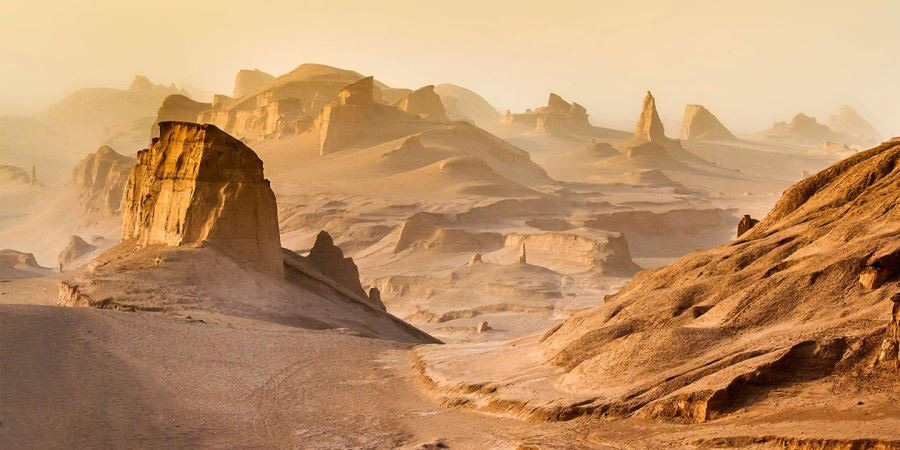June 25, 2021

The American Meteoro-logical Society has declared Iran’s Lut Desert to be the hottest spot on earth, displacing California’s Death Valley for that honor by a long shot more than 40 degrees Fahrenheit.
For many years, Death Valley in California was thought to be the hottest spot on the planet with a temperature of 134.1 degrees Fahrenheit (56.7 degrees Celsius) recorded on July 10, 1913, while the average summer temperature of the valley runs around 113 degrees Fahrenheit (45 degrees Celsius).
But a new study reveals that the valley has been overthrown by deserts in Iran and Mexico. Based on a new analysis of high-resolution satellite data, Iran’s Lut Desert (Dasht-e Lut) and the Sonoran Desert along the Mexico-US border have recently been declared as the hottest spots on Earth, with a sizzling high of 177.4 degrees Fahrenheit (80.8 degrees Celsius) recorded in 2018 in the Lut and 2019 in the Sonoran.
The study, entitled Global Patterns of Hottest, Coldest and Extreme Diurnal Variability on Earth,” published in the Bulletin of the American Meteorological Society, explains how high-resolution satellite data from the past two decades proves the two regions are hotter than Death Valley.
The problem with historic figures is that hot spots haven’t been measured regularly so the hottest days can easily be missed. The new data are based on satellite data, which is recorded throughout the year.
Between the Lut Desert and the Sonoran Desert, the Lut holds the crown for the world’s hottest land surface temperature based on the satellite data from 2002 through 2019 which found the hottest spot on the planet in 11 of those 18 years was in the Lut and in five of those years was in the Sonoran. In the other two years, the hottest spot was recorded in two different African deserts.
The black rocks of the Lut Desert tend to get the hottest, and heat is trapped by its mountains, which reduces the winds. Due to the high temperature of the area, life struggles to exist.
Iran’s Lut Desert is surrounded by mountains that trap the warm air, which makes the temperatures of the valley hotter. Researchers are not sure whether climate change has any effect on the high temperatures in the Lut Desert and the Sonoran Desert.
Aside from identifying the hottest spot on Earth, the researchers also identified Antarctica as the coldest place on the planet with a low of -199 degrees Fahrenheit (-110.9 degrees Celsius).
The research was done with a NASA grant by four American based meteorologists—Hamid Norouzi of the City University of New York; Marzi Azarderakhsh of Fairleigh Dickinson University; Amir AghaKouchak of the University of California at Irvine; and Yunxia Zhao of the University of California at Irvine.























